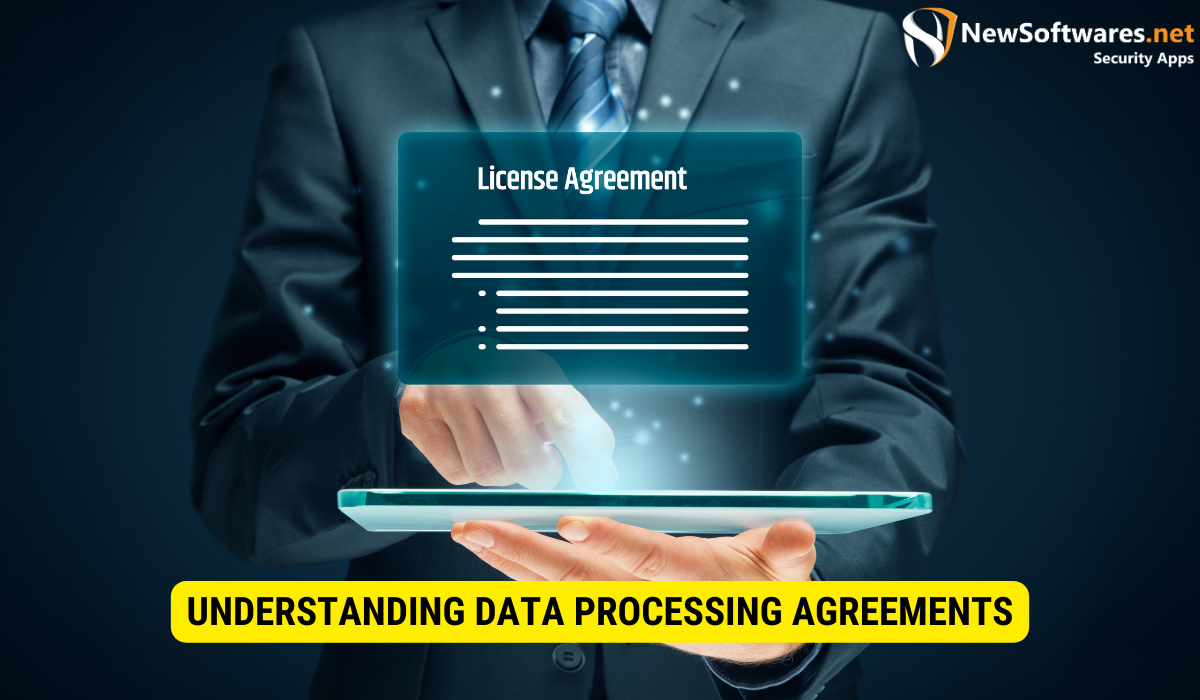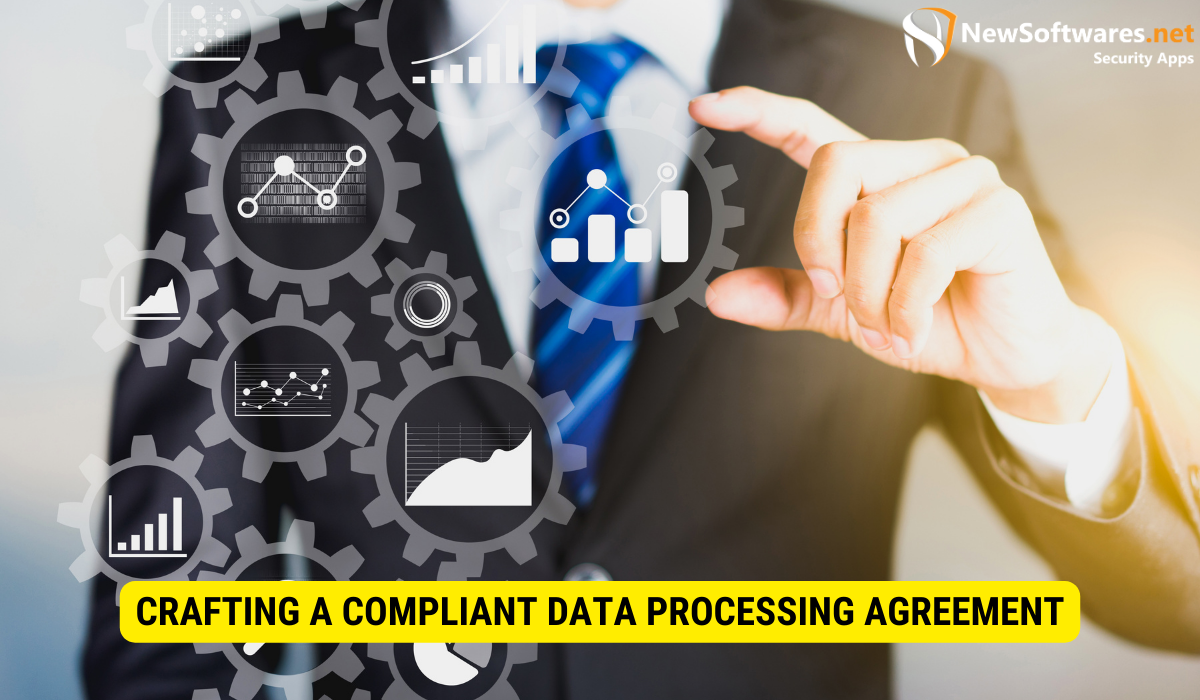Yes, if your business processes personal data, especially within the EU, you need a Data Processing Agreement (DPA). Privacy Shield also plays a crucial role in data protection when transferring data from the EU to the US.
Do you need a Data Processing Agreement Privacy Shield?” This is a common question that arises when businesses deal with personal data, especially when operating within the European Union and transferring data to the United States. Understanding the importance of data protection and compliance is crucial for any organization handling personal information. Together, we will delve into the intricacies of data processing agreements and privacy shields, their significance, and the steps you need to take to ensure your business remains compliant.
Understanding Data Processing Agreements

The Basics of Data Processing Agreements
Before delving into the necessity of a data processing agreement, it is essential to comprehend what it entails. A data processing agreement is a legally binding contract among a data controller and a data processor. The data controller, typically the entity collecting personal data, entrusts the data processor with processing the information on their behalf. Data processing can include storage, retrieval, alteration, or even erasure of personal data.
Data processing agreements set out the specific terms and conditions governing the relationship between the data controller and processor. It outlines the roles and responsibilities of each party, ensuring that personal data is processed in obedience to applicable data protection laws and regulations.
Importance of Data Processing Agreements in Business
As personal data becomes an increasingly valuable asset, organizations around the world are facing growing privacy concerns and regulatory scrutiny. The implementation of comprehensive data processing agreements is not just an upright practice; it is a legal requirement in many jurisdictions.
One of the primary benefits of having a data processing agreement is fostering transparency and accountability. By clearly defining the roles and obligations of both parties, data controllers and processors can ensure that they operate in a manner that protects individuals’ rights and safeguards their personal information.
Data breach incidents have become more prevalent, and their impact can be severe. A data processing agreement sets out the security measures that need to be in place to protect personal data from illegal access, accidental loss, or destruction. This bolsters your organization’s data security posture and helps mitigate potential risks.
Moreover, having a data processing agreement in place demonstrates to your customers and stakeholders that you take data protection seriously. It builds trust and credibility, which are crucial for maintaining positive relationships in an increasingly privacy-conscious era.
Privacy Shield Framework: An Overview
The Role of Privacy Shield in Data Protection
The Privacy Shield framework is an arrangement between the European Union and the United States, ensuring that personal data transferred from the EU to participating organizations in the US is done in a manner that complies with EU data protection laws. It provides a mechanism for US companies to demonstrate adequate protection for personal data, which is a requirement under the General Data Protection Regulation.
Privacy Shield aims to bridge the disparity between EU and US data protection standards by providing organizations with a framework that aligns with EU data protection principles. This includes ensuring transparency, security, and individual rights when transferring personal data across borders.
Key Principles of Privacy Shield Framework
The Privacy Shield framework encompasses several key principles that participating organizations must adhere to:
- Notice: Organizations must provide clear, readily available information about their privacy practices and the types of personal data they collect.
- Choice: Individuals must have the ability to opt out of the collection and use of their personal data.
- Accountability for Onward Transfer: Organizations must ensure that any third parties with whom they share personal data provide the same level of protection.
- Security: Effective safeguards must be in place to protect personal data from loss, misuse, and illegal access.
- Data Integrity and Purpose Limitation: Organizations should only process personal data that is applicable and limited to the purposes for which it was collected.
- Access: Persons should have the skill to access and correct their personal data.
- Recourse, Enforcement, and Liability: A mechanism should be in place to investigate and resolve complaints regarding the handling of personal data.
Necessity of a Data Processing Agreement for Your Business
Legal Requirements for Data Processing Agreements
If your business operates within the EU or deals with personal data originating from the EU, having a data processing agreement in place is not optional; it is a legal requirement under the GDPR. The GDPR sets out specific provisions that organizations must follow when transferring personal data outside the EU. Failure to comply can lead to substantial fines & reputational damage.
When engaging a data processor, such as a cloud service provider, you need to ensure that a data processing agreement is in place. This agreement should cover key aspects, such as the purpose of processing, the duration of the processing, the nature of the data, and the rights and obligations of both parties.
Benefits of Having a Data Processing Agreement
The benefits of having a data processing agreement extend beyond mere compliance. Let’s explore some of these advantages:
- Legal Compliance: A data processing agreement ensures that your organization meets its legal obligations under data protection laws, safeguarding your business from potential penalties.
- Risk Mitigation: By outlining data security measures and responsibilities, you can minimize the risk of data breaches and associated financial and reputational consequences.
- Trust and Accountability: Demonstrating your commitment to protecting individuals’ personal data promotes trust among your customers, partners, and stakeholders.
- Clear Roles and Expectations: A robust data processing agreement clarifies the roles and obligations of both parties, preventing misunderstandings and potential disputes.
The Intersection of Data Processing Agreements and Privacy Shield
How Privacy Shield Influences Data Processing Agreements
When transferring personal data from the EU to the US, the Privacy Shield framework provides a mechanism to enable compliant data transfers. However, it is crucial to note that a data processing agreement alone is not sufficient to demonstrate compliance with Privacy Shield requirements.
A data processing agreement should incorporate additional provisions to align with Privacy Shield principles. This includes addressing accountability for onward transfers, providing notice to individuals, and implementing security measures in line with Privacy Shield requirements.
Ensuring Compliance with Both Data Processing Agreements and Privacy Shield
To ensure compliance with both data processing agreements and Privacy Shield, it is recommended to take the following steps:
- Review Existing Agreements: Assess your current data processing agreements to identify any gaps or provisions that may need revision to align with Privacy Shield requirements.
- Amendments and Addendums: Update existing agreements or create addendums to incorporate the necessary Privacy Shield provisions, ensuring clarity for both parties.
- Educate Personnel: Train employees and contractors involved in data processing to understand their responsibilities and obligations under Privacy Shield and the data processing agreement.
- Monitor and Audit: Regularly review and assess your data processing activities and Privacy Shield compliance to identify areas for improvement or potential risks.
Crafting a Compliant Data Processing Agreement

Essential Elements in a Data Processing Agreement
When drafting or reviewing a data processing agreement, ensure the following essential elements are included:
- Scope and Purpose: Clearly define the purpose and scope of the data processing activities, ensuring that they align with the data protection principles and the requirements of both the data controller and processor.
- Data Types and Categories: Identify the specific types and categories of personal data being processed, including any special categories of personal data as defined by the GDPR.
- Data Security: Detail the security measures and safeguards in place to protect personal data from unauthorized access, disclosure, alteration, or destruction.
- Sub-Processors: If the data processor engages sub-processors, outline the conditions under which this is allowed and ensure that the sub-processors provide the same level of protection as stated in the agreement.
- Data Subject Rights: Specify how data subjects’ rights, such as access, rectification, erasure, and objection, will be addressed and the process for handling data subject requests.
- Term and Termination: Set the duration of the agreement and the conditions under which it may be terminated, including data deletion and return obligations.
Legal Considerations in Drafting a Data Processing Agreement
When drafting a data processing agreement, it is crucial to seek legal expertise to ensure compliance with applicable laws and regulations. Here are some key legal considerations:
- Jurisdiction and Governing Law: Specify which laws and courts govern the agreement and ensure that it aligns with the relevant data protection regulations applicable to your business.
- Liabilities and Indemnification: Clearly outline the liabilities of each party in case of non-compliance or breaches of the data processing agreement.
- Changes and Amendments: Include provisions that allow for changes to the agreement to address regulatory updates, technological advancements, or changes in the scope of data processing activities.
- Dispute Resolution: Define the mechanism for resolving disputes, which can include negotiation, mediation, or arbitration.
Key Takeaways
Understanding the importance of data processing agreements and privacy shields is essential for any organization dealing with personal data. Here are the key takeaways from this article:
- Data processing agreements establish the legal framework between data controllers and processors, outlining their roles and responsibilities for compliant data processing.
- The Privacy Shield framework ensures that personal data transferred from the EU to the US meets EU data protection standards.
- A data processing agreement is crucial for legal compliance, risk mitigation, and building trust with stakeholders.
- To ensure compliance with both data processing agreements and Privacy Shield, organizations need to review and update their agreements, educate personnel, and regularly monitor their data processing activities.
- When drafting a data processing agreement, consider essential elements such as scope, data security, sub-processors, and data subject rights, while also incorporating key legal considerations.
FAQs
Is a data processing agreement mandatory?
If your business processes personal data, especially within the EU, having a data processing agreement is mandatory under the GDPR and other data protection regulations.
How does Privacy Shield influence data processing agreements?
Privacy Shield influences data processing agreements by requiring adherence to specific principles when transferring personal data from the EU to the US. Organizations must incorporate Privacy Shield provisions in their agreements to ensure compliance.
Can a template data processing agreement be used?
While templates can be a good starting point, it is advisable to tailor the data processing agreement to your specific business requirements and seek legal advice to ensure compliance with the applicable laws and regulations.
What are the potential consequences of non-compliance with data processing agreements and Privacy Shield?
Non-compliance with data processing agreements and Privacy Shield can lead to severe consequences, including substantial fines, reputational damage, and potential legal action.
How often should data processing agreements be reviewed and updated?
Data processing agreements should be regularly reviewed and updated to address regulatory changes, technology advancements, and changes in the scope of data processing activities. Regular audits should also be conducted to ensure ongoing compliance.
Conclusion
Understanding Data Processing Agreements (DPAs) and their relationship with Privacy Shield is essential for organizations handling personal data. Compliance is not only a legal requirement but also a way to mitigate risks and build trust with stakeholders. By regularly reviewing and updating DPAs, staying informed about data protection regulations, and educating personnel, businesses can ensure they protect personal data effectively and maintain compliance.
